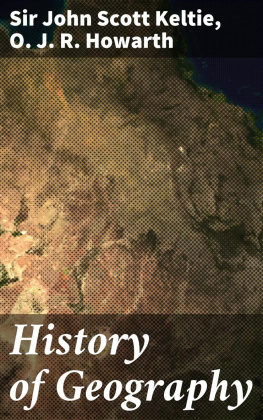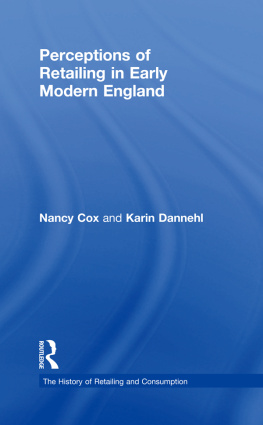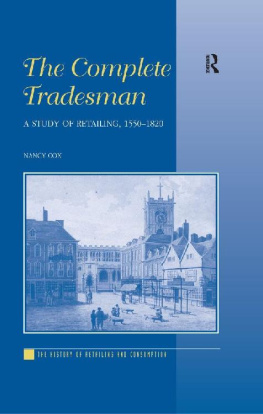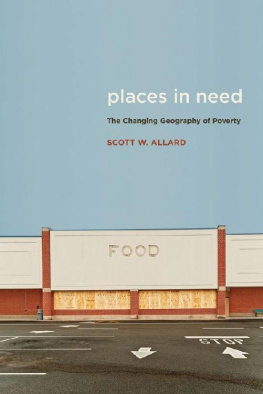Geography and RETAILING
Peter Soctt
Geography and RETAILING
First published 1970 by Transaction Publishers
Published 2017 by Routledge
2 Park Square, Milton Park, Abingdon, Oxon OX14 4RN
711 Third Avenue, New York, NY 10017, USA
Routledge is an imprint of the Taylor & Francis Group, an informa business
Copyright 1970 by Peter Scott.
All rights reserved. No part of this book may be reprinted or reproduced or utilised in any form or by any electronic, mechanical, or other means, now known or hereafter invented, including photocopying and recording, or in any information storage or retrieval system, without permission in writing from the publishers.
Notice:
Product or corporate names may be trademarks or registered trademarks, and are used only for identification and explanation without intent to infringe.
Library of Congress Catalog Number: 2006048048
Library of Congress Cataloging-in-Publication Data
Scott, Peter, 1922
Geography and retailing / Peter Scott
p,cm,
Originally published: Chicago : Aldine Pub, Co., 1970.
Includes bibliographical references and index.
ISBN 978-0-202-30946-0 (alk, paper)
1, Retail trade, 2, Central places, I, Title.
HF5429.S3594 2007
658.8'7dc22
2006048048
ISBN 13: 978-0-202-30946-0 (pbk)
CONTENTS
I remain a great believer in the small shop, the small business, the small anything-else-you-like, the Archbishop of Canterbury is reported to have said, because it is through the small things that God teaches man (Sunday Times, 23 March 1958). While it is pleasing to consider that this small book should qualify at least a priori as an article of episcopal faith the main lesson that the writing of it has taught me, a lesson learnt more sharply by many an independent retailer, is that there are pronounced diseconomies of small scale. When I conceived the idea of this book, sadly I recall as far back as 1956, the literature on the spatial analysis of retailing was so circumscribed as to have permitted a generous discussion of major concepts in a book of so small a compass. Its scale, like that of the small specialty shop, offered distinct economies.
Since then, with the upsurge of interest in retail location not only among geographers but also among planners, market analysts, retailers, and others, the literature has burgeoned. It has not therefore been possible to accord due space to many important contributions, nor even to reproduce maps and tables that might have facilitated discussion, still less to embody mathematical notation. Maps and mathematics readily available in the published literature have been comprehensively cited. It is in fact one of the aims of this small book to orientate the student through a plethora of studies drawn often from disparate fields of formal enquiry. Yet the primary aim as originally conceived has been to focus on some major concepts basic to an under-standing of spatial retail patterns, concepts given varying but generally inadequate weight in much of the earlier concern with hierarchical classification and of the current concern with retail-location models.
Three acknowledgments among the many I owe have long standing and require record. My publishers like the very small remnant waiting for the coming have shown inexhaustible patience when seemingly without hope. My thanks are also due to the University of Tasmania who graciously granted me at the end of a spell of high office six months special leave to get this book off my chest and perchance its author out of their hair. But my warmest and deepest sympathy goes out to my wife and four daughters who though naturally addicted to shopping endured most charitably the extreme provocation of a non-shopping male obsessed with writing and talking shop. Without their stimulating and kindly disparagement even so small a book might never have been completed.
April 1969
PETER SOCTT
1
RETAIL GEOGRAPHY AND CENTRAL-PLACE STUDIES
In Western countries retail distribution is an important sector of the national economy. In Britain, for example, retail sales account for more than one-half of total consumer expenditure, and the retail trade employs as many as one in every ten insured workers, or more than twice the work force engaged in the primary industries of agriculture, fisheries, and forestry. Although total employment in retailing is less than one-third that in manufacturing, retailing as measured by employment is the largest single industry in many British towns. As the level per capita of real income rises the role of distribution in the national economy tends to increase.
Yet despite its economic importance retail distribution has remained until recently a comparatively neglected field of academic enquiry. In his pioneer study on the economics of retailing Henry Smith (1937, p. I) commented that because retail trade appears to the English to contain an essential element of unworthiness, a blend of the sinister and the ridiculous, economists had generally preferred to concern themselves with subjects of which the titles carried a more dignified and scholarly connotation. He might well have added that this scholarly predilection was shared by other social scientists as well, notably by geographers and sociologists; certainly in subsequent years such predilection was more evident among geographers than among economists. The next quarter of a century saw some notable advances both in the theory of retailing and in empirical economic enquiry but the few contributions that were made to our understanding of retail location and the spatial manifestations of the retail sector in Britain came mainly and perforce from town planners. Only of late have geographers, at least in Britain, paid much attention to the spatial analysis of retailing.
In recent years, however, the concern of geographers with central-place theory has added considerably to our knowledge of spatial retail patterns. Christallers classic study Die zentralen Orte in Siiddeutschland, published at Jena in 1933 and first brought to the attention of English-speaking scholars by Ullman (1941), has aroused such widespread interest that the book has been translated into English (Baskin, 1958; Christaller, 1966) and has stimulated a substantial literature on central places (Berry and Pred, 1961, 1965). In the course of these developments the concepts advanced by Christaller have been modified, extended, and verified. Yet even so the central-place model cannot be readily reconciled with our knowledge of retail location derived from economic theory and from the behaviour of both consumers and entrepreneurs.
One reason for this stems from the more embracing scope of central-place theory which relates not only to retailing but to all tertiary activity. Christallers starting-point is that an urban centre, whether town or hamlet, exists primarily to provide goods and services for the surrounding area. Such services are termed central functions and the service centres providing them are central places. A central place will locate at the centre of minimum aggregate travel. Given uniformly distributed purchasing power and expenditure patterns and given equal accessibility from all points the complementary region would be hexagonal in shape. Shops located in central places would also have hexagonal market areas.












